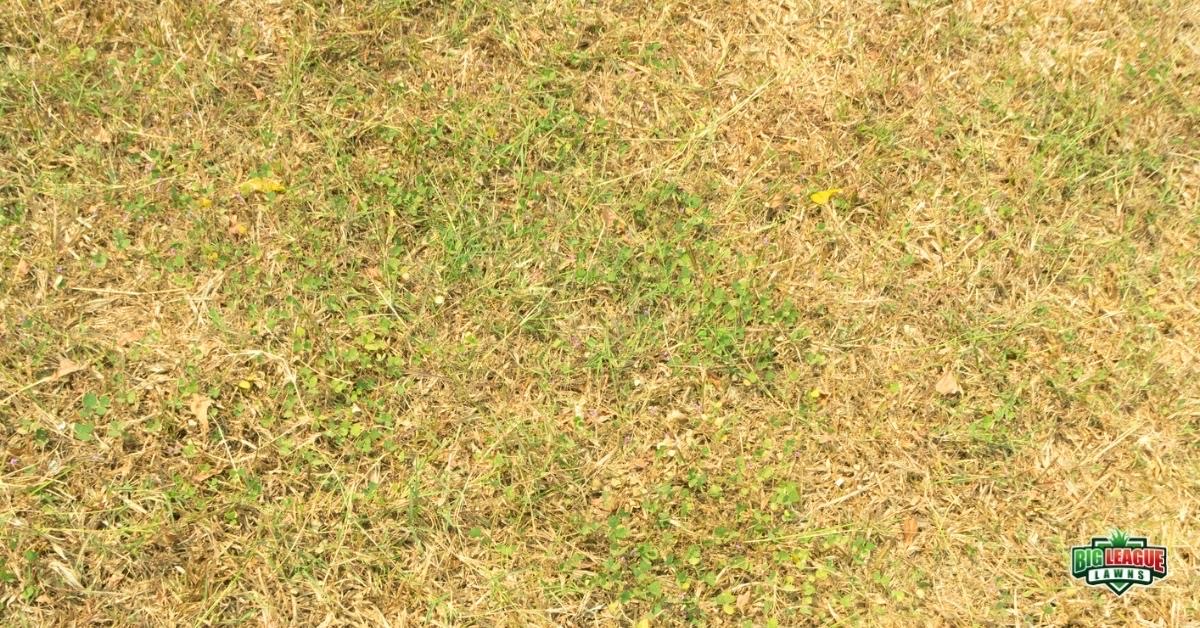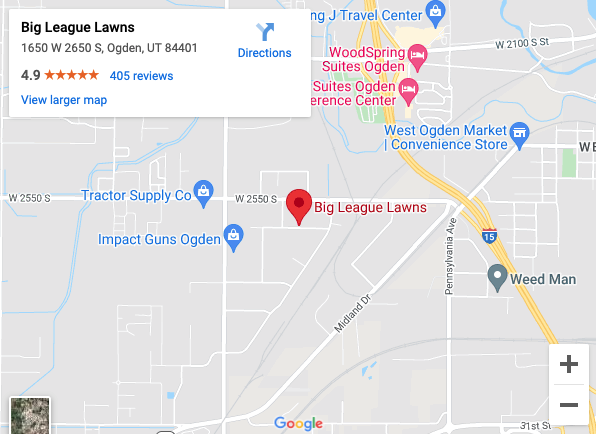You may be bewildered by the mystery of what is causing your grass to be yellow in some spots, larger areas, or across the entire lawn. What’s causing it? Is yellow grass dead? Perhaps you’ve tried all the obvious remedies, and yet the lawn is still yellow. There is a pretty wide range of potential reasons why your grass is yellow and seems to be resistant to your best efforts to restore it to good health. Here are some of the most common causes of yellow grass and tips for growing a healthy green lawn.
Why is My Grass Turning Yellow?
Many homeowners are surprised to discover that there are actually more possible causes of yellow grass in their Utah lawn than they had assumed. Here are 10 of the most common reasons why yellow grass spots, patches, or larger areas appear and some tips on how to fix yellow lawn problems:
Common Lawn Fungus
Various species of fungi can kill your grass and make your lawn yellow. For example, Necrotic Ring causes yellow rings of grass on areas of a lawn. This fungus is sometimes spread during cool wet weather conditions. It can take several years for it to disappear. Overseed and add fertilizer to the impacted areas of the lawn to help eliminate it. When cool rain is followed by soaring hot temperatures, Ascochyta can develop and cause yellow grass patches on some areas of a lawn. Mow less often until the fungus is no longer yellowing the lawn.
Overwatering Or Underwatering
Watering a lawn every day cultivates a shallow root system, which means the grass is not as durable as it could be if watered with less frequency but longer each time. When under stress, the weaker grass yellows much more easily and quickly. Alternatively, underwatering can cause the grass to become too dry and lead to dead grass. Follow the Big League watering guide for Utah lawns to be sure your grass is consistently getting the right amount of water.
Compacted Soil
When the soil under your lawn becomes too compact, the roots of the grass are unable to grow deep enough to become strong and healthy. Common causes of compacted soil include overwatering or extreme amounts of foot traffic or vehicle traffic on the ground from home construction or other activities. Thick thatch in the grass, more than an inch thick, can also cause compaction. Dethatch your grass and have proper soil aeration done to loosen compact soil.
Lawn Grubs
One of the most common causes of yellow grass is lawn grubs (beetle larvae). It’s also the most difficult to remedy without professional intervention by a lawn pest control professional. These larvae are left to lay beneath the soil surface through the winter and then emerge in the spring to begin gorging on grass crowns and roots in your lawn, causing large areas of yellow grass.
Poor Nutrition
A symptom of insufficient nutrition in grass is a yellowing lawn. Other signs that may indicate a nutritional deficiency include grass growing slowly and/or pale turf instead of healthy green. Thin grass blades or fragile, wilting blades can also be signs of poor nutrition. Fertilize grass to add nutrients, but not more than every other week (twice each month).
Over-Fertilizing
When an entire lawn is yellow, it could be getting too much nitrogen, which burns grass. This is caused by excessive fertilizing. To avoid fertilizer burn, follow the product manufacturer’s recommendations for frequency and density of application. You may be able to mitigate over-fertilizing by quickly watering the grass to dilute the concentration. After a couple of weeks or so, if the lawn is still yellow, apply heavy watering, till the soil, over-seed it, and water thoroughly again to rebuild your lawn.
Mowing Grass Too Short
Mowing your grass very short during hot months weakens the root system. That promotes drying and burning of the grass blades during the hottest periods. Dull mower blades can tear grass instead of cutting it, which can cause the tops of the grass blades to be too dry and turn yellow. Sharpen the mower blades at least once each year, and keep your grass cut no shorter than around 3 inches tall.
Dry Conditions
Dry weather often causes grass to turn yellow. To help your lawn remain healthy and robust through dry periods, cultivate deeper roots that will allow your grass to stay strong even in hot dry Utah summer weather conditions. Be sure to water sufficiently to offset drought-like conditions and prevent excessive drying of your grass throughout hot and dry summer weather.
Is Your Grass Still Yellow?
Could your lawn benefit from expert analysis and treatment? Big League Lawn Care lawn rehabilitation experts can diagnose your grass and cultivate a gorgeous thick green lawn for you. So, if your lawn yellowing problem persists and it seems like nothing is working to remedy the condition, call us for a professional assessment. We’ll quickly identify the right solution(s), and we can rejuvenate your grass to produce the beautiful, healthy green lawn you want, probably faster than you expected.
Get The Yellow Off Your Lawn! Call Big League Lawn Care.
Big League Lawn Care provides lawn analysis and rehabilitation treatment to produce lush green healthy lawns for Utah homeowners and businesses in Utah. Our residential and commercial services include lawn fertilization, aeration, winterization, and lawn pest control, among others. We serve Weber and Davis counties. Our lawn treatment services are 100% guaranteed.



